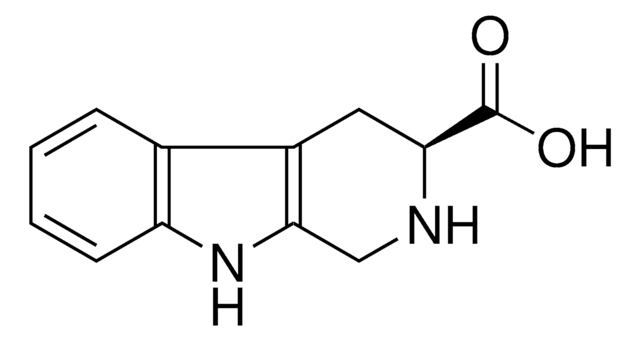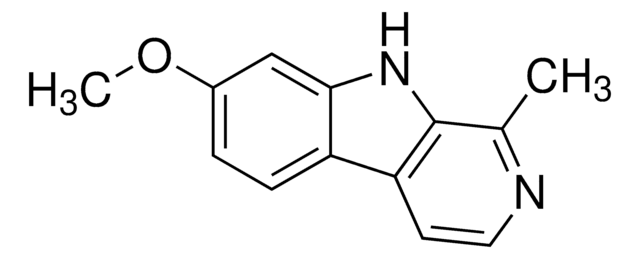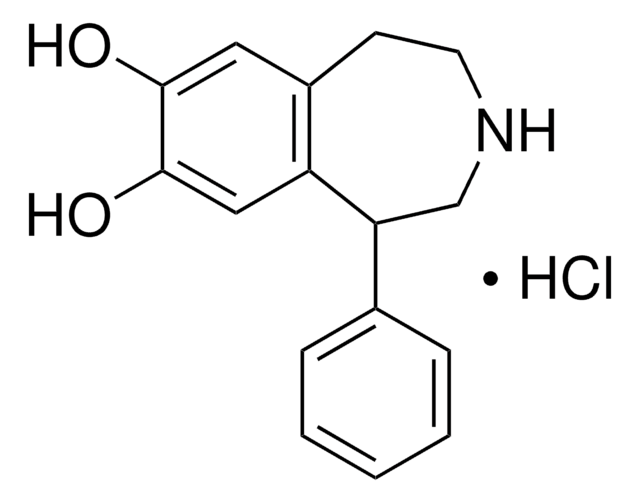SML2784
CMPD101 hydrochloride
≥98% (HPLC)
同義詞:
3-((4-Methyl-5-(pyridin-4-yl)-4H-1,2,4-triazol-3-yl)methylamino)-N-(2-(trifluoromethyl)benzyl)benzamide, 3-[[[4-Methyl-5-(4-pyridinyl)-4H-1,2,4-triazol-3-yl]methyl]amino]-N-[[2-(trifluoromethyl)phenyl]methyl]benzamide hydrochloride, Compound 101 hydrochloride, Cpd101 hydrochloride, Takeda101 hydrochloride
登入查看組織和合約定價
全部照片(1)
About This Item
暫時無法取得訂價和供貨情況
推薦產品
品質等級
化驗
≥98% (HPLC)
形狀
powder
儲存條件
desiccated
顏色
white to beige
溶解度
DMSO: 2 mg/mL, clear
儲存溫度
2-8°C
SMILES 字串
CN1C(CNC2=CC=CC(C(NCC3=CC=CC=C3C(F)(F)F)=O)=C2)=NN=C1C4=CC=NC=C4.Cl
InChI 密鑰
QBLGBXYDINNUFE-UHFFFAOYSA-N
生化/生理作用
Active site-targeting, potent and subtype-selective G protein-coupled receptor kinase GRK2/3 inhibitor with no inhibitory potency against GRK1/5.
CMPD101 is an active site-targeting, potent and subtype-selective G protein-coupled receptor kinase GRK2 & GRK3 inhibitor (human GRK2/3 IC50 = 54/32 nM with 3 μM ATP and tubulin dimer as substrate; bovine GRK2 IC50 = 290 nM with 0.5 mM ATP and bROS as substrate; no GRK1/5 inhibition at 125 μM). CMPD101 selectively inhibits GPR39 agonist-induced β-arrestin recruitment (by 94% at 10 μM against 30 μM GPR39-C3/50 μM ZnCl2), but not cAMP pathway desensitization in cultures and prevents β-arrestin2-biased D2R ligand UNC9994(1 μg/side bilateral local injection) from blocking NMDAR antagonist PCP (6 mg/kg i.p.)-induced locomotion (60%/12% blockage without/with 0.5 μg CMPD101 co-injection) in mice in vivo.
儲存類別代碼
11 - Combustible Solids
水污染物質分類(WGK)
WGK 3
閃點(°F)
Not applicable
閃點(°C)
Not applicable
Yuji Shimizu et al.
Biochemical pharmacology, 140, 105-114 (2017-06-18)
GPR39, a G-protein-coupled receptor activated by zinc, reportedly activates multiple intracellular signaling pathways via Gs, Gq, G12/13, and β-arrestin, but little is known about downregulation of the receptor upon its activation. To our knowledge, this is the first report on
Seung-Ryoung Jung et al.
The Journal of general physiology, 147(3), 255-271 (2016-03-02)
Activated Gq protein-coupled receptors (GqPCRs) can be desensitized by phosphorylation and β-arrestin binding. The kinetics and individual contributions of these two mechanisms to receptor desensitization have not been fully distinguished. Here, we describe the shut off of protease-activated receptor 2
Arisbel B Gondin et al.
Frontiers in molecular neuroscience, 12, 104-104 (2019-05-24)
Differential regulation of the μ-opioid receptor (MOP) has been linked to the development of opioid tolerance and dependence which both limit the clinical use of opioid analgesics. At a cellular level, MOP regulation occurs via receptor phosphorylation, desensitization, plasma membrane
David M Thal et al.
Molecular pharmacology, 80(2), 294-303 (2011-05-21)
G protein-coupled receptors (GPCRs) are key regulators of cell physiology and control processes ranging from glucose homeostasis to contractility of the heart. A major mechanism for the desensitization of activated GPCRs is their phosphorylation by GPCR kinases (GRKs). Overexpression of
Alessandro Martini et al.
Neuropharmacology, 155, 76-88 (2019-05-28)
Neurotensin (NT) is a 13-amino acid peptide acting as a neuromodulator in the CNS. NT immunoreactive cell bodies, synaptic terminals and receptors (NTS) are intimately associated with the dopaminergic system. In fact, NT exerts a stimulatory action on the dopaminergic
Active Filters
我們的科學家團隊在所有研究領域都有豐富的經驗,包括生命科學、材料科學、化學合成、色譜、分析等.
聯絡技術服務






![1,2,3,4-四氢-9H-吡啶并[3,4-b]吲哚 98%](/deepweb/assets/sigmaaldrich/product/structures/181/460/3d58bc34-1b5c-4295-bbac-3b52085670e8/640/3d58bc34-1b5c-4295-bbac-3b52085670e8.png)
